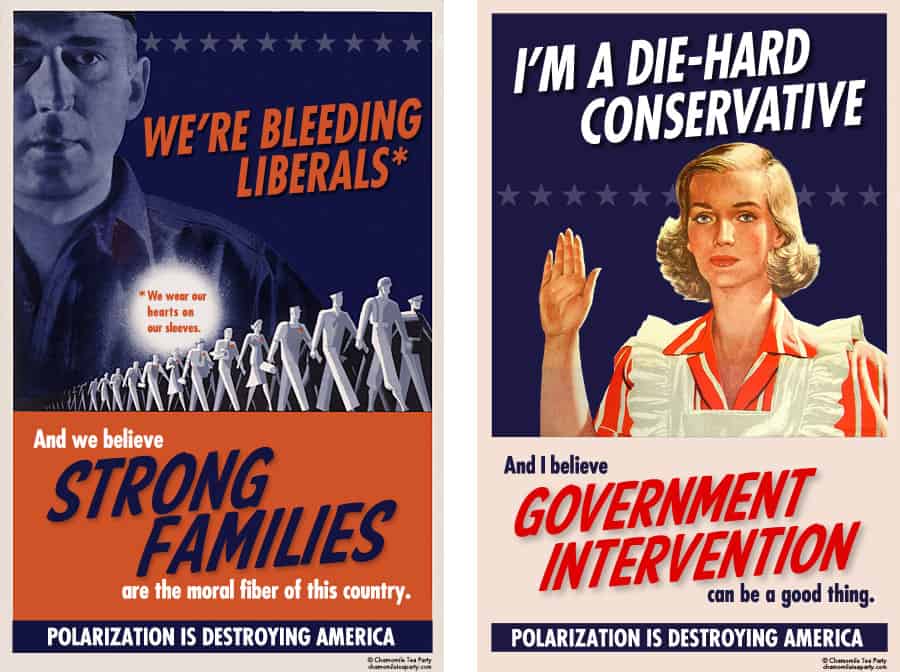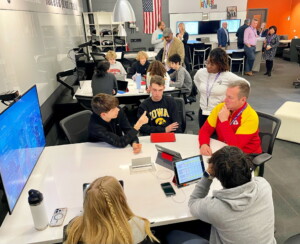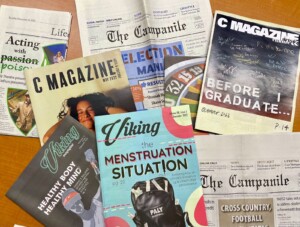Partisanship is Ruining Public Education

If it seems like the political gulf has widened in America, it’s not just the beginning of the presidential election season. “As Americans head to the polls this November, their values and basic beliefs are more polarized along partisan lines than at any point in the past 25 years.” That was the disturbing but not surprising report released yesterday by the Pew Research Center. Polarization is making American dumber and less competitive.
Polarization is reducing our civic problem solving capacity. Thomas Homer Dixon was right a decade ago when he predicted an Ingenuity Gap. Our problems have grown more complex and interrelated and our ability to thoughtfully address them has plummeted. Take for example, congressional failure to deal with mounting federal debt, culminating in the stalled National Commission on Fiscal Responsibility and Reform in 2010, so now we’re in for dumb cuts instead of smart solutions.
The recall election of Wisconsin Governor Scott Walker, being held today, sets a bad precedent, according to Andy Rotherham. He noted that it “is clear from our increasingly broken politics, we’ve lost the ability to work with those with whom we disagree, or to respect elections and the process of governance enough to let it run its course.”
Polarization is damaging public education with an increase in dysfunctional school boards, fringe diversions, incoherent state policy, and federal gridlock. Only a decade ago a bipartisan reauthorization of federal education legislation ushered in a new data-driven framework. You may not agree with all of it, but at least there was evidence of design thinking in D.C.
Evidence of bipartisanship is slim these days. While we spent a decade bickering, the Chinese have been building infrastructure. As James Fallows notes in China Airborne, the Chinese committed $250 billion to jump-start its aerospace industry.
This country is stuck on old problems and entrenched in disingenuous debate fueled by superpac superficiality. But thoughtful commentators agree that the innovation economy requires two things:
- Growth oriented policies: low tax rates, transparent and efficient government, and
- An opportunity platform that includes effective education and health services and efficient energy and transportation infrastructure.
It’s not just a question of more or less government–the challenge is to create high functioning public services that fuel growth and create opportunity. If you clear the political hype, leaders of both parties aren’t that far apart on these issues. All the money that flows into campaigns these days has exacerbated differences and forces politicians to the fringe in the primaries.
The technology revolution is creating new opportunities that reframe old problems. New drilling technology reframed our conception of natural resources. Clean tech is reframing our conception of consumption. In education, digital learning and empowered consumers have reframed the debate about educational choice. The flood of data from embedded assessments will obliterate the old standardized testing debate. Environments that blend online and onsite learning are leveraging talent with technology and reframe the teacher effectiveness debate.
Polarization is bad for our kids. The solution set is pretty clear. But all the money sloshing around in our political system makes it hard for us to listen to each other (and we need to invent a constitutional way to deal with that). Our cities and states need pro-growth and pro-opportunity platforms. That means giving up some luxuries of the past, investing where it will pay off, and treating each other with some common courtesy.
For more, see WaPo for great charts and the money quotes from the Pew report.
This post first appeared on Huffington Post






Vicki Davis
Great article! Thank you for pointing out the details of something that most people realize: the US is becoming polarized and often completely unable to work together. Instead of finding common ground, we tend to go towards areas where we disagree and want to "make" each other do things and go places we aren't willing to go. Here's the comment I shared on this topic (with a link to your blog) on Facebook and Google+
"As I have pondered the "Hatfields and McCoys" movie and that feud that caused the 2 leading families in an area to kill each other, I believe we have a modern day Hatfields and McCoys: The Republicans and Democrats. It is high time we learn to work together for things that improve our country. Instead, for now, the "powers that be" would rather fight to the death and that isn't good for anyone. This article just shows how true this statement is."
Thanks for a great article.
Replies
Tom Vander Ark
Thanks Vicki. The fix is complicated. At the top of the list is all the money in politics now. I was disappointed to see the Supreme Court reject McCain/Feingold. I'm not sure how we engineer a constitutional change to the system but to watch $2b be spent in the next six months will be sickening. As an independent, I already get robo calls from both parties every day!
Ed Jones
Tom, thought-provoking. But I'd say we're better than we were 5-10 years ago.
First, we're dealing with the education solutions at the state and inter-state level. As things should be. Everybody wants to be President or head up some national office, but what we really need in education is good-old civic problem solving the way it was done by Benjamin Franklin--by lining up individuals and coalitions who have ideas and can help. Just as you have done.
Second, we're sharing information and ideas in unprecedented--by orders of magnitude--volume. And government has little to do with this. A decade ago, government was a major force of information collection and distribution. If you wanted to address a nationwide problem, having an office in DC was a good idea. Today? Your office can be in Toronto or Juarez.
Infrastructure and aerospace? AP writer Ted Anthony wrote a wonderful piece. "America Expands Again", locally headlined as "Digital [manifest] Destiny". We're on a new frontier.
Even foreign affairs efforts have been democratized. Think Facebook, Twitter, and the Egyptian revolution. Or the Ohio company that specializes in emerging nations' education systems.
The money in politics? Well, just think of it as non-forced redistribution. You wouldn't want to put flacks, pundits, editors, screenwriters, bus drivers, newboys out of a job would you?
Beyond that, the big money was there before. Think of the NEA with it's $350 million budget. Most of that is spent on politics. Even their day-to-day website (and their state-affiliates') focuses on (mostly artificial) partisan issues.
Finally and perhaps most importantly, one of the biggest issues in education continues to be the state of the Black family. That's a problem government helped cause, but it's not clear how government can help solve it.
"Even in the antebellum era, when slaves often weren't permitted to wed, most black children lived with a biological mother and father. During Reconstruction and up until the 1940s, 75% to 85% of black children lived in two-parent families.
Today, more than 70% of black children are born to single women."
--Jason Riley, WSJ
It's not the noise; it's the gaping silence.